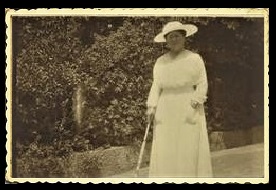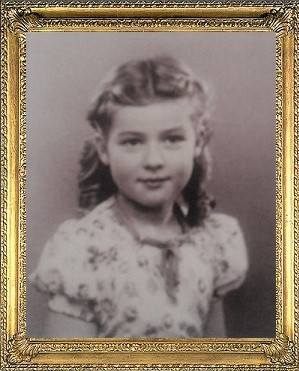Cecilia Grunwald
Imperial Chambermaid and Noble-woman

Cecilia Gustavovna Grunwald, called Kiki or Kikili, the chambermaid of Maria Feodorovna, in a lovely photograph taken in her private chamber at the attic floor at Hvidøre, sometime between 1907 – 1914 (Top illustration: © KB/Royal Library Copenhagen. Licensed)


Certainly, the title “chambermaid” in an Imperial household should not be taken lightly. The chambermaid had a great responsibility, and being the one person who had he privilege of combing the Empress´ hair, Cecilia was often referred to as the most powerfull woman in the empire. She could be “go between” when someone had a request. She also had access to the Empress at all hours. As chambermaid to the Empress, Cecilia also took care of the wardrobe and the Empress´ amazing jewels. Twice a year, the jewels were overseen by two jewellers, who kept an album with precise and colored drawings of all the jewellery in use and in the safekeeping of Cecilia. On court business and on days with public access, Cecilia would attend the gatherings wearing the sign of her importance and function at court, a small white linnen bonnet on the top of her head, doing her curtseys in front of the Empress. Cecilia shared in the Empress´ confinement in various places in the Crimea 1917-1919 and fled along with members of the imperial family and other loyal staff onboard the vessel Marlborough. Here Cecilia was given special care, as she had backpains and had to rest in a real bed, not a bunk. At Hvidøre in Denmark, she carried out all her proper functions until 1928, where she moved into a small flat in Copenhagen, not far from Zinaida Mengden. Here she made hats and ornaments and attended mass every week at the Russian church. Cecilia originally came from Riga and was, as pointed out by Zinaida Mengden in her memoirs, a noble-woman of birth. As it was often the fact, members of the Imperial household often had charges at court through family relations. Cecilia Grunwald died in 1951.

In her old age, Cecilia Grunwald met the young Danish girl, Merete. They became friends.

From the late 1940´ies untill 1951, Merete visited Cecilia in her flat on a regular basis. Here she was taught the Russian alphabet, was read childrens books, and was given cakes and soft drinks. Merete later told that Kiki always wore two great diamonds in her ears, that she kept two trunks full of her memorabilia always ready to move – including Russian silver currency – , and that she attended mass at the Russian church and the church bazaars. She also made her very own junket in a small green jug, eating it every morning for breakfast. Cecilia used to make her own hats and dresses, she spoke only a poorly yet understandably Danish, but found it very difficult to read. As a child Merete was given presents at her birthday, and since Cecilia was fond of knitting, Merete was given dolls- clothes and a sweater and small but precious trinkets like enamelled eastereggs and a silverspoon. Cecilia also used to make fine embroidery on napkins and tableclothes. In her apartment, the furniture consisted of a sofa, some chairs, a large linnen cabinet, a ladys writing desk, all painted white and gilded, from Hvidøre. She didn´t have a bed, but probably slept on a hard couch upholstered in reddish silk. The walls were covered in photographs and paintings, many of the Imperial family and the Empress´grandchildren. After her death in 1951, the trunks also turned out to be full of clothes. The formal dresses, shoes and even underwear of the Empress Maria Feodorovna. Cecilia made a loving and everlasting impression on the Danish child.


